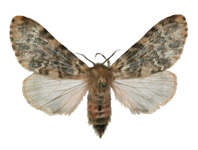Abstract
The family Discodorididae was previously represented by 11 species in Brazil; however, recently collected specimens from several localities in Rio de Janeiro, in addition to the study of material previously deposited in scientific collections, revealed the existence of 13 taxa: Diaulula greeleyi (MacFarland, 1909), Discodoris hummelincki (Ev. Marcus & Er. Marcus, 1963) comb. nov., Discodoris branneri MacFarland, 1909, Geitodoris pusae (Er. Marcus, 1955), Hoplodoris hansrosaorum Domínguez, García & Troncoso, 2006, Jorunna spazzola Er. Marcus, 1955, Jorunna spongiosa sp. nov., Paradoris mulciber (Ev. Marcus, 1971), Platydoris angustipes (Mörch, 1863), Rostanga byga Er. Marcus, 1958a, Taringa telopia Er. Marcus, 1955, Taringa iemanja sp. nov., and Thordisa diuda Er. Marcus, 1955. Discodoris voniheringi MacFarland, 1909 was previously regarded as nomen dubium, and this view is maintained in the present study. Three new records for the Brazilian coast are recognized among these 13 taxa; the previous record of Diaulula phoca (Ev. Marcus & Er. Marcus, 1967a) is rectified as Discodoris hummelincki comb. nov., constituting the first record of this species from Brazil; two new species, Taringa iemanja sp. nov. and Jorunna spongiosa sp. nov., are described in anatomical detail. The following taxa, which were formerly considered junior synonyms of species studied in this work, have been revalidated: Diaulula nayarita (Ortea & Llera, 1981), from the Pacific coast of Costa Rica, which differs from Diaulula greeleyi in the length and width of caryophyllidia; Discodoris mortenseni Ev. Marcus & Er. Marcus, 1963, from the Caribbean, which is likely to belong to Jorunna, yet differs from Jorunna spazzola in body size and coloration, radula appearance, and number of lamellae in the rhinophores; Jorunna luisae Ev. Marcus, 1976, which differs from Jorunna spazzola in the reproductive system, mainly in the size and shape of the accessory gland; and Thordisa azmani Cervera & García-Gómez, 1989, which differs from Thordisa diuda in the presence of two accessory glands in the genital atrium and the absence of one denticle in the external surface of the inner lateral teeth. Finally, the specimens of Geitodoris pusae reported from the European coast and Mediterranean Sea show differences in general coloration and in the radula, gill, and reproductive system, thereby these specimens likely refer to different taxa.

